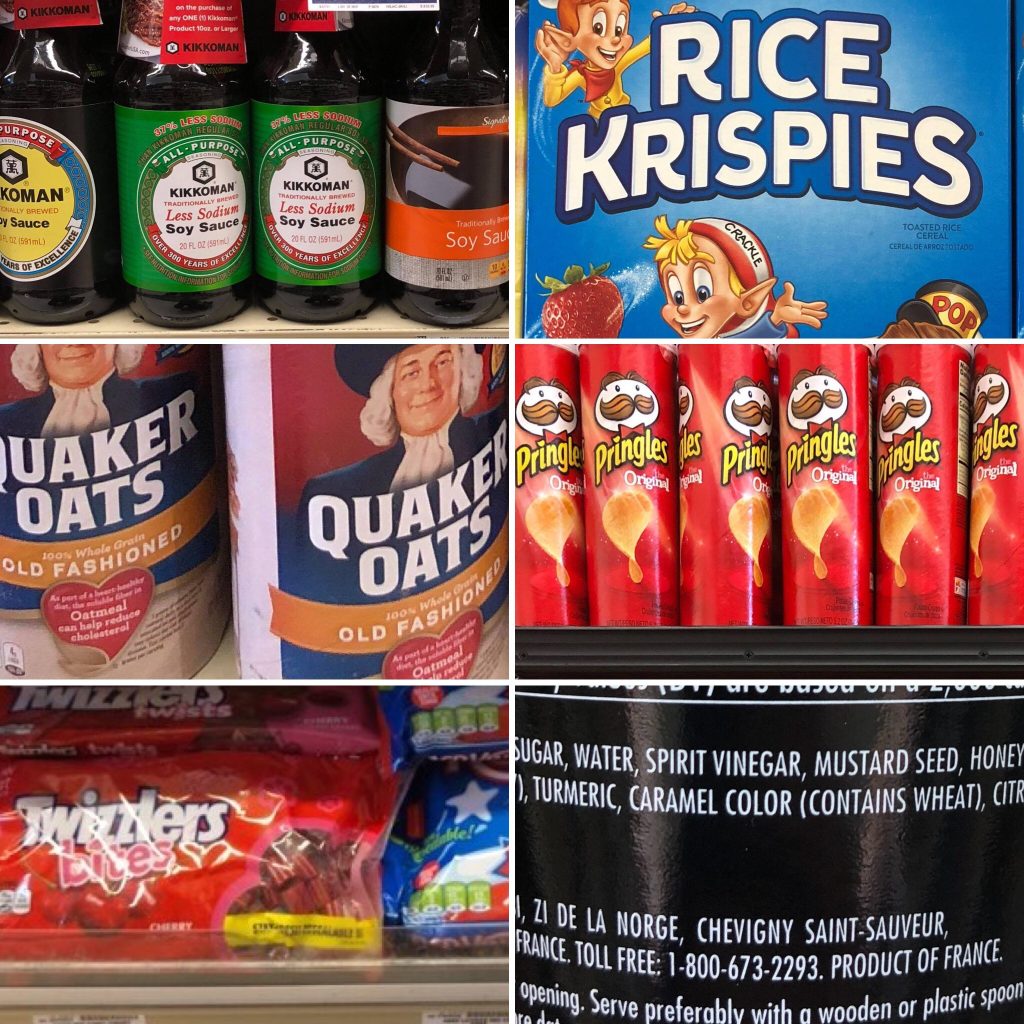 When people think of “gluten”, the protein found in wheat, barley, and rye, they usually think of the obvious foods like bread, pasta, crackers, cookies, etc. When you eat gluten-free, for whatever reason, you might be surprised to learn there are many places you might find gluten that you would not expect. Needless to say, I have been guilty of missing gluten in foods; my daughter is the one who usually catches it. I know there are more but this is my list of 10 hidden sources of gluten.
When people think of “gluten”, the protein found in wheat, barley, and rye, they usually think of the obvious foods like bread, pasta, crackers, cookies, etc. When you eat gluten-free, for whatever reason, you might be surprised to learn there are many places you might find gluten that you would not expect. Needless to say, I have been guilty of missing gluten in foods; my daughter is the one who usually catches it. I know there are more but this is my list of 10 hidden sources of gluten.
For more about how the US defines gluten-free in regards to labeling, I suggest you read this post from Erin, the Gluten-Free Globetrotter, about how it works.
Comment below if you know them all or if you have other products where you have found gluten.
- Soy sauce and anything with soy sauce in it (marinades, dressings, etc). Exception/alternative: Tamari (but still check for the gluten-free label). Soy sauce is made from…soy, right? Well, it’s usually fermented with wheat. So if you want a gluten-free meal, you better skip anything made with it. It’s most difficult at Asian restaurants but we even found a restaurant that added it to the ketchup! It pays to ask questions.
- Sushi. Exception/alternative: a gluten-free version or homemade. But it’s sushi, right? Where can there be gluten? Four main sources: rice vinegar containing gluten (check with the restaurant or buy one that is GF); imitation crab or krab, like in a California roll (the brand Trans-Ocean makes a gluten-free version); cross contamination in a restaurant from cutting rolls with battered/fried items and/or soy sauce; and any sushi that comes with soy sauce on it already. I also learned that Unagi, the barbecued eel that we used to love, is usually marinated in a sweet soy sauce. But the roll you see below, which I made with my daughter, is all gluten-free. It was super easy to make as well!
- Cornbread. Exception/alternative: cornbread made without any flour or made with gluten-free flour and cornmeal. This comes up a lot especially during the holidays when people make stuffing from cornbread. Make sure you know what’s in it. Also, check the cornmeal. My daughter was reacting to my gluten-free cornbread until I realized the fine print on the cornmeal label; “made on equipment that also processes wheat”. I switched to a gluten-free version of the cornmeal and she was all better.
- Condiments. Exception/alternative: labeled brands. Yes, it sounds crazy but I always check labels. A family member was about to use a honey mustard for a salad dressing during a Sunday get together. I asked to check the label and there it was: wheat! Another time I had hot sauce I was about to use. My daughter asked me if it was GF. I looked at the ingredients and was surprised to find wheat. It’s very common in Korean hot sauces so beware. Most manufacturers should be able to tell you or it should be on their website. Mustard and salad dressing seem to be the biggest offenders.
- Processed/deli meats. Exception/alternative: labeled brands and prepackaged sliced meat. The problem is that US companies don’t have to disclose gluten specifically; only wheat. So if barley was used as a binder or wheat is called something else (e.g. caramel color or natural flavor), it may not be in the ingredients. However, I have noticed lately that the labeling is better so it’s easier to find something that is gluten-free. Also, the deli may not be safe if there is bread nearby or if the person slicing the meat also touched bread or there are crumbs on the counter.
- Oats. Exception/alternative: gluten-free oats or another gluten-free grain cereal. This is really surprising to a lot of people. There are three things about oats you need to know: oats can be contaminated when they are grown near other gluten grains; oats can be contaminated during processing in the factory and on the same equipment; and some people cannot tolerate oats, even if they are gluten-free. Furthermore, some cereal boxes claim a gluten-free status (for example, Cheerios) but the testing is not always accurate. I encourage you to do your research. We don’t eat anything with oats unless it’s certified. Ok, so I just noticed in this picture (I think I didn’t have my glasses on at the time) that the oats on the higher shelf say “Gluten Free”. So does that mean it’s certified? No. Here’s what is on the Quaker Oats website. With 139 years of oat-milling experience under our belts, our experts developed a breakthrough cleaning system to remove these other grains so that we can deliver gluten free oatmeal* with the quality consumers expect from Quaker. Uhm…Quaker…you may know how to mill oats, I’ll give you that. But cleaning oats to make them gluten-free?? Do you test each batch? Gee, it’s amazing how wheat and gluten sort of look like the same grain. I’ll pass. I feel like things like this make it so confusing for the consumer.
- Licorice. Exception/alternative: gluten-free licorice. I have only found a few brands in the US: Yum Earth and Candy Tree. This is one of those candies that has unexpected gluten. However, once you start looking at the labels, you might find it very hard to find any that don’t contain wheat. And I mean as a second or third ingredient! If you see licorice, assume it has wheat unless it’s labeled gluten-free.
- Rice and corn based cereals. Exception/alternative: a gluten-free version. Most crisp rice cereal and desserts made from them (like one of my childhood favorites, Rice Krispy treats) have malt flavoring which means they are not gluten-free. What you need to be careful of is that neither malt nor barley have to be disclosed in the US as an allergen (bad on us). Look for a gluten-free label or check the ingredients. Also corn flake cereal usually has malt as an ingredient. You can find gluten-free brands of both rice and corn cereals but you need to look. One company, Sweet Street, makes a gf crisp rice cereal bar. You can usually find a similar product at Starbucks as well.
- Candy and chocolate. Exception/alternative: check labels or check with the manufacturer. Back to the malt/barley discussion as well as shared equipment/lines/factory. There is plenty of gluten-free candy out there; you just may need to look a little bit. You always want to check the mini and/or holiday versions of candies and chocolates. These are often made in another factory. Most companies now have this information on their website. Here is a statement about York peppermint patties from the Hershey company’s website listing what is gluten-free: York Peppermint Patties – All Except York Pieces Candy, Sugar Free Peppermint Patties, York Minis, and York Shapes (5 oz.)
- Potato chips, tortilla chips, and veggie sticks. Exception/alternative: a gluten-free version. This always surprises people when I ask to see the label I have been offered a seemingly innocent chip. I might have gotten a couple of eye rolls, too. In the US, Pringles have wheat in them. Lays Stax does not. I have found gluten in bbq chips (barley/malt flavoring) too. A few companies make whole grain tortilla chips with added wheat. One tortilla company adds soy sauce. Yup, not gluten-free. If those tortilla chips from your local taqueria or Mexican restaurant are fried with the flour tortillas…they are no longer gluten-free. Oh, I should mention you need to be careful with corn tortillas that you might use for tacos. Most are gluten-free but if you see “soft” on the label, check the ingredients. Some tortillas have wheat in them to make them easier to roll. And veggie sticks?! Again, my daughter said to me one day, many years ago, “Mommy, these are gluten-free, right?”. I looked at the label and there it was, wheat starch. I think she was 5 or 6 years old. Such a smart girl!
Do you have other foods you have found that contain gluten that you didn’t expect? What do you think of this list of 10 hidden sources of gluten? Leave a quick comment. Thank you for reading! Also thanks for my friends Debbie and Alison who were kind enough to provide me with most of these photos.


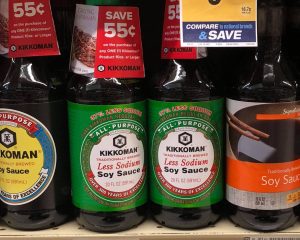

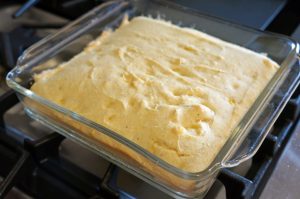

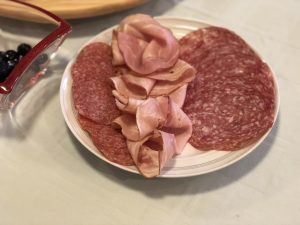

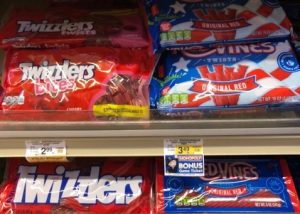


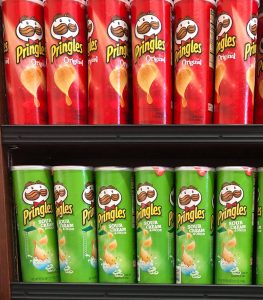
No comments yet.